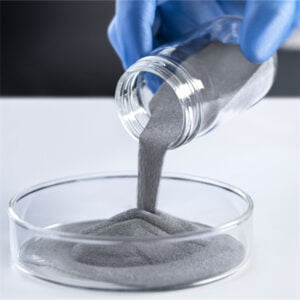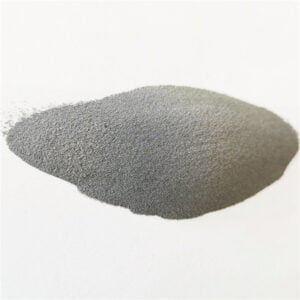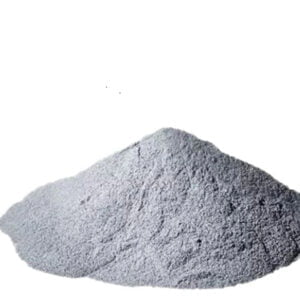Podrobná analýza procesního toku EBM
Obsah
Tavení elektronovým svazkem (EBM) je revoluční technologie 3D tisku, která rychle mění výrobní prostředí. Představte si, že vytváříte složité kovové díly vrstvu po vrstvě pomocí fokusovaného elektronového paprsku - to je podstata EBM! Zajímalo vás však někdy, co se děje v zákulisí tohoto špičkového technologického procesu? Připoutejte se, protože se chystáme pustit do podrobné analýzy průběhu procesu EBM a rozebrat jednotlivé fáze, abychom odhalili jeho kouzlo.
Přípravné práce pro EBM Průběh procesu
Než se elektronový paprsek pustí do svého tance, je třeba položit zásadní základy. Tady je to, co připravuje půdu:
- Návrh CAD: Vše začíná digitálním plánem. Váš 3D model, pečlivě vytvořený pomocí softwaru CAD, slouží jako plán, podle kterého se stroj EBM řídí.
- Výběr kovového prášku: Jádro EBM spočívá v použitém kovovém prášku. Tyto jemné kovové částice (obvykle o velikosti 20 až 100 mikrometrů) se vyrábějí v různých variantách, z nichž každá má jedinečné vlastnosti. Za chvíli se ponoříme hlouběji do fascinujícího světa kovových prášků.
- Nastavení a kalibrace stroje: Samotný stroj EBM je zázrakem techniky. Je v něm umístěno vysoce výkonné elektronové dělo, vakuová komora, která udržuje nedotčené prostředí, a stavební platforma, která se pečlivě spouští s každou vrstvou. Kalibrace zajišťuje, že elektronový paprsek dopadá na práškové lože s naprostou přesností, což je klíčový krok pro dosažení rozměrové přesnosti.
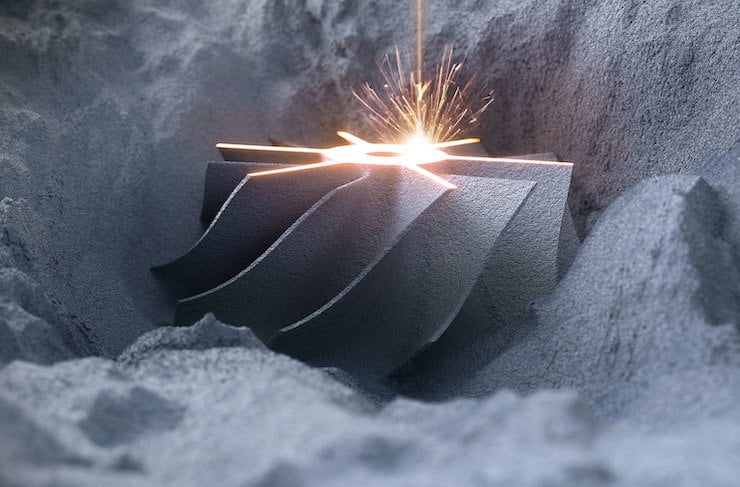
Výběr kovového prášku: Prášek Powerhouse
Jak již bylo zmíněno, kovový prášek je krví EBM. Zde je bližší pohled na některé z nejoblíbenějších možností spolu s jejich klíčovými vlastnostmi:
| Kovový prášek | Složení | Vlastnosti | Aplikace |
|---|---|---|---|
| Ti-6Al-4V (slitina titanu) | 6% hliník, 4% vanad, titanové závaží | Vysoký poměr pevnosti a hmotnosti, vynikající biokompatibilita | Letecké komponenty, biomedicínské implantáty, protetika |
| Nerezová ocel 316L | Chrom, nikl, molybden, železo Bilance | odolnost proti korozi, dobré mechanické vlastnosti | Zdravotnické přístroje, zařízení pro zpracování chemikálií, lodní komponenty |
| Inconel 625 (superslitina) | Nikl, Chrom, Molybden, Kolumbium, Železo Bilance | Pevnost při vysokých teplotách, odolnost proti oxidaci | Součásti plynových turbín, díly raketových motorů, výměníky tepla |
| CoCrMo (kobalt-chrom-molybdenová slitina) | Kobalt, chrom, molybden | Biokompatibilní, odolný proti opotřebení | Náhrady kloubů, zubní implantáty |
| Slitiny hliníku (AlSi10Mg atd.) | Hliník s křemíkem, hořčíkem | Lehké, s dobrou pevností | Automobilové komponenty, letecké konstrukce, chladiče |
| Měď | Čistá měď | Vysoká tepelná vodivost, dobrá elektrická vodivost | Výměníky tepla, elektrické komponenty, vlnovody |
| Wolfram | Čistý wolfram | Vysoký bod tání, vysoká hustota | Tvarovací nástroje, elektrody, balistické aplikace |
| Maraging Steel | Nikl, molybden, titan, železo Rovnováha | Vysoká pevnost, dobrá tažnost | Letecké komponenty, součásti střelných zbraní, nástroje |
| Niklové superslitiny (Inconel 718 atd.) | Komplexní složení s niklem, chromem a molybdenem | Výjimečný výkon při vysokých teplotách | Lopatky turbín, součásti raketových motorů, výměníky tepla |
| Slitiny titanu (CP Ti atd.) | Komerčně čistý titan | Vynikající biokompatibilita, dobrá odolnost proti korozi | lékařské implantáty, zubní aplikace, zařízení pro zpracování chemikálií |
Tento seznam je jen letmým pohledem na širokou škálu kovových prášků dostupných pro EBM. Výběr prášku závisí na požadovaných vlastnostech konečného dílu, jako je pevnost, hmotnost, odolnost proti korozi, biokompatibilita a tepelná vodivost.
Skenování elektronovým paprskem EBM Průběh procesu
Nyní přichází kouzlo! Elektronové dělo v přístroji EBM ožije a vytvoří vysoce fokusovaný svazek elektronů. Tento paprsek funguje jako virtuální štětec a selektivně taví kovový prášek podle předem naprogramovaného návrhu CAD. Zde je rozpis procesu skenování:
- Systém vychýlení: Elektronový paprsek není pevná čára. Jeho pohyb řídí sofistikovaný vychylovací systém, který jej směruje napříč práškovým ložem a přesně definuje požadovaný vzor pro každou vrstvu.
- Strategie skenování: V EBM se používají různé strategie skenování, z nichž každá má své výhody. Mezi běžné přístupy patří rastrové skenování, vektorové skenování a ostrovní skenování. Volba strategie závisí na faktorech, jako je geometrie dílu, požadavky na povrchovou úpravu a tepelné řízení.
- Řízení výkonu paprsku: Rozhodující roli hraje výkon elektronového paprsku. Vyšší výkon vede k hlubšímu tavení a potenciálně rychlejšímu sestavování. Pečlivá kontrola je však nezbytná, aby nedošlo k přehřátí a deformaci dílu. Představte si, že balancujete s rozpáleným štětcem na lůžku z kovového prášku - to je jemný tanec EBM!
-
 Ti45Nb prášek pro aditivní výrobu
Ti45Nb prášek pro aditivní výrobu -
 Prášek ze slitiny TiNb
Prášek ze slitiny TiNb -
 Prášek ze slitiny TiNbZrSn
Prášek ze slitiny TiNbZrSn -
 Ti6Al4V prášek Kovový prášek na bázi titanu pro aditivní výrobu
Ti6Al4V prášek Kovový prášek na bázi titanu pro aditivní výrobu -
 CPTi prášek
CPTi prášek -
 TC18 Powder : Odemknutí síly karbidu titanu
TC18 Powder : Odemknutí síly karbidu titanu -
 TC11 Powder: Komplexní průvodce
TC11 Powder: Komplexní průvodce -
 TC4 ELI prášek
TC4 ELI prášek -
 Nejlepší prášek Ti-6Al-4V (TC4 Powder) pro aditivní výrobu
Nejlepší prášek Ti-6Al-4V (TC4 Powder) pro aditivní výrobu
Výroba procesu EBM po jednotlivých vrstvách
EBM vyrábí díly skutečně aditivním způsobem, po jednotlivých vrstvách. Zde se dozvíte, jak se toto kouzlo vrstvy po vrstvě vyvíjí:
- Nátěr čepele: Po naskenování každé vrstvy elektronovým paprskem nanese nůž pro opakované nanášení vrstvy kovového prášku na konstrukční platformu. Tím je zajištěn nepřetržitý přísun materiálu pro další tavenou vrstvu.
- Tepelný management: EBM zahrnuje lokální tavení, ale teplo nezůstává omezené. Stroj používá různé techniky, jako je předehřívání konstrukční platformy a použití podpůrných struktur, aby se zvládly tepelné gradienty a zabránilo se deformaci nebo praskání dílu.
- Tloušťka vrstvy: Tloušťka jednotlivých vrstev v EBM se může lišit v závislosti na požadovaném rozlišení a době sestavení. Typické tloušťky vrstev se pohybují v rozmezí 30 až 100 mikronů a nabízejí rovnováhu mezi detaily a efektivitou.
Představte si, že stavíte složitou stavbu cihlu po cihle, ale místo cihel používáte vrstvy roztaveného kovu - to je podstata výrobního procesu EBM vrstvu po vrstvě. Tento přístup umožňuje vytvářet složité geometrie a vnitřní prvky, které by při použití tradičních subtraktivních technik, jako je obrábění, nebyly možné.
Následné zpracování EBM Průběh procesu
Cesta nekončí po roztavení poslední vrstvy. Následuje následující:
- Úleva od stresu: U dílů EBM může docházet ke zbytkovému napětí v důsledku tepelných cyklů, které jsou součástí procesu. Žíhání na uvolnění napětí pomáhá tato napětí zmírnit a zlepšuje rozměrovou stabilitu a mechanické vlastnosti dílu.
- Odstranění podpůrné konstrukce: Podobně jako při odstraňování lešení z budovy je třeba odstranit podpůrné konstrukce používané při procesu EBM. To lze provést různými metodami, například elektroerozivním obráběním nebo mechanickým řezáním.
- Povrchová úprava: Povrchy EBM mohou být vzhledem k povaze procesu mírně drsné. K dosažení požadované povrchové úpravy lze použít techniky následného zpracování, jako je obrábění, leštění nebo tryskání.
Postprocessing si představte jako finální úpravu vašeho mistrovského díla. Tyto kroky zajišťují, že díl EBM splňuje požadovanou rozměrovou přesnost, mechanické vlastnosti a estetiku povrchu.
Výhody a omezení EBM
EBM má několik přesvědčivých výhod:
- Svoboda designu: EBM vyniká při vytváření složitých geometrií, včetně vnitřních prvků a mřížkových struktur, které jsou při použití tradičních metod obtížné nebo nemožné.
- Vysoce výkonné materiály: Tento proces je kompatibilní se širokou škálou vysoce výkonných kovových prášků, což umožňuje vytvářet díly s výjimečnou pevností, tepelnou odolností a biokompatibilitou.
- Výroba s téměř čistým tvarem: EBM minimalizuje materiálový odpad v porovnání se subtraktivními technikami a nabízí udržitelnější a nákladově efektivnější přístup pro určité aplikace.
EBM má však také svá omezení, která je třeba vzít v úvahu:
- Doba výstavby: EBM může být v porovnání s některými jinými metodami 3D tisku pomalejší proces, zejména u větších dílů.
- Drsnost povrchu: Povrchy EBM mohou být ve stavu, v jakém byly vyrobeny, mírně drsné, což u některých aplikací vyžaduje dodatečné dodatečné zpracování.
- Náklady: Stroje EBM a kovové prášky mohou být drahé, takže tento proces je vhodnější pro díly s vysokou hodnotou nebo aplikace, kde jsou jeho jedinečné schopnosti nezbytné.
EBM je mocný nástroj, ale jako každý nástroj je nejvhodnější pro konkrétní úkoly. Pochopení jeho silných a slabých stránek vám umožní činit informovaná rozhodnutí o jeho vhodnosti pro váš projekt.
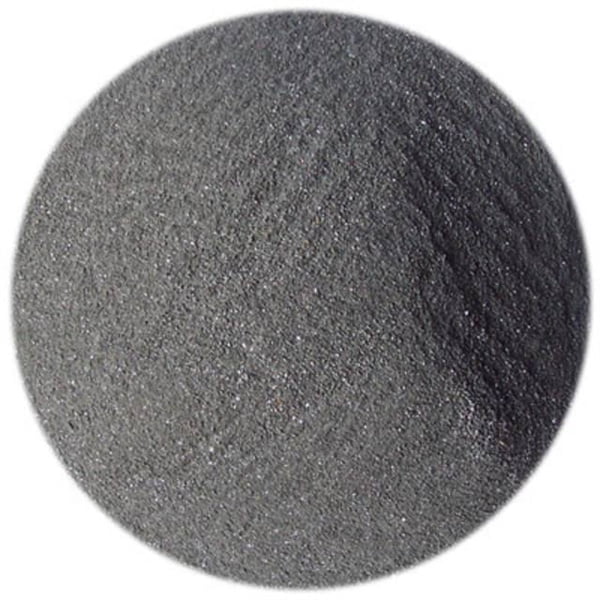
FAQ
Zde je několik často kladených otázek týkajících se EBM průběh procesu, odpovědi v jasném a stručném formátu:
| Otázka | Odpovědět |
|---|---|
| Jaké jsou výhody EBM oproti jiným metodám 3D tisku? | EBM nabízí větší volnost při navrhování, umožňuje použití vysoce výkonných kovových prášků a minimalizuje plýtvání materiálem ve srovnání s některými subtraktivními technikami. |
| Jaká jsou některá omezení EBM? | EBM může být pomalejší než jiné metody, může vyžadovat dodatečné zpracování povrchu a může být dražší kvůli nákladům na stroj a materiál. |
| Jaké typy kovových prášků lze v EBM použít? | Lze použít širokou škálu kovových prášků, včetně slitin titanu, nerezové oceli, superslitin, kobalt-chromu, hliníkových slitin a dalších. |
| Jaké jsou některé aplikace EBM? | EBM se používá v různých průmyslových odvětvích, včetně leteckého, biomedicínského, automobilového a energetického, k výrobě vysoce výkonných kovových dílů. |
| Jak elektronový paprsek skenuje práškové lože? | Důmyslný vychylovací systém řídí elektronový paprsek a směruje jej napříč práškovým ložem tak, aby definoval požadovaný vzor pro každou vrstvu. |
Závěr
Tavení elektronovým svazkem (EBM) je více než jen technologie 3D tisku, je to brána do světa možností. Díky pečlivému tavení kovového prášku vrstvu po vrstvě umožňuje EBM vytvářet složité, vysoce výkonné díly, které byly dříve považovány za nemožné. EBM posouvá hranice designu a výroby - od složitých leteckých součástek až po život zachraňující biomedicínské implantáty.
Stejně jako u každé složité technologie je zásadní pochopit průběh procesu EBM. Prozkoumali jsme každou fázi, od pečlivé přípravy přes kouzlo vrstvy po vrstvě až po finální úpravy po zpracování. Tyto znalosti vám umožní činit informovaná rozhodnutí o tom, zda je EBM tím správným nástrojem pro váš projekt.
Sdílet na
MET3DP Technology Co., LTD je předním poskytovatelem řešení aditivní výroby se sídlem v Qingdao v Číně. Naše společnost se specializuje na zařízení pro 3D tisk a vysoce výkonné kovové prášky pro průmyslové aplikace.
Dotaz k získání nejlepší ceny a přizpůsobeného řešení pro vaše podnikání!
Související články

Vysoce výkonné segmenty lopatek trysek: Revoluce v účinnosti turbín díky 3D tisku z kovu
Přečtěte si více "O Met3DP
Nedávná aktualizace
Náš produkt
KONTAKTUJTE NÁS
Nějaké otázky? Pošlete nám zprávu hned teď! Po obdržení vaší zprávy obsloužíme vaši žádost s celým týmem.

Kovové prášky pro 3D tisk a aditivní výrobu
SPOLEČNOST
PRODUKT
kontaktní informace
- Město Qingdao, Shandong, Čína
- [email protected]
- [email protected]
- +86 19116340731









